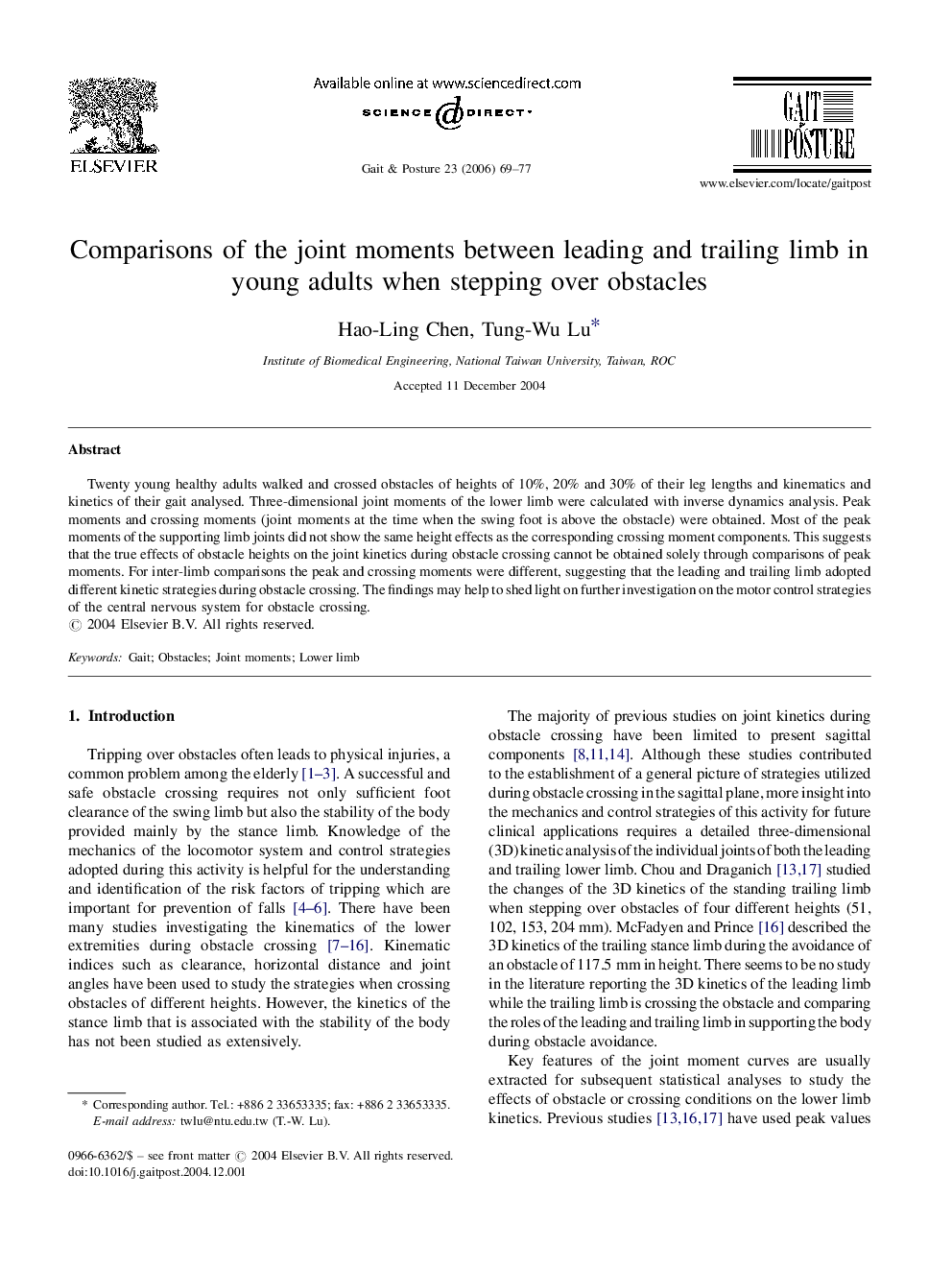| Article ID | Journal | Published Year | Pages | File Type |
|---|---|---|---|---|
| 4058570 | Gait & Posture | 2006 | 9 Pages |
Twenty young healthy adults walked and crossed obstacles of heights of 10%, 20% and 30% of their leg lengths and kinematics and kinetics of their gait analysed. Three-dimensional joint moments of the lower limb were calculated with inverse dynamics analysis. Peak moments and crossing moments (joint moments at the time when the swing foot is above the obstacle) were obtained. Most of the peak moments of the supporting limb joints did not show the same height effects as the corresponding crossing moment components. This suggests that the true effects of obstacle heights on the joint kinetics during obstacle crossing cannot be obtained solely through comparisons of peak moments. For inter-limb comparisons the peak and crossing moments were different, suggesting that the leading and trailing limb adopted different kinetic strategies during obstacle crossing. The findings may help to shed light on further investigation on the motor control strategies of the central nervous system for obstacle crossing.
